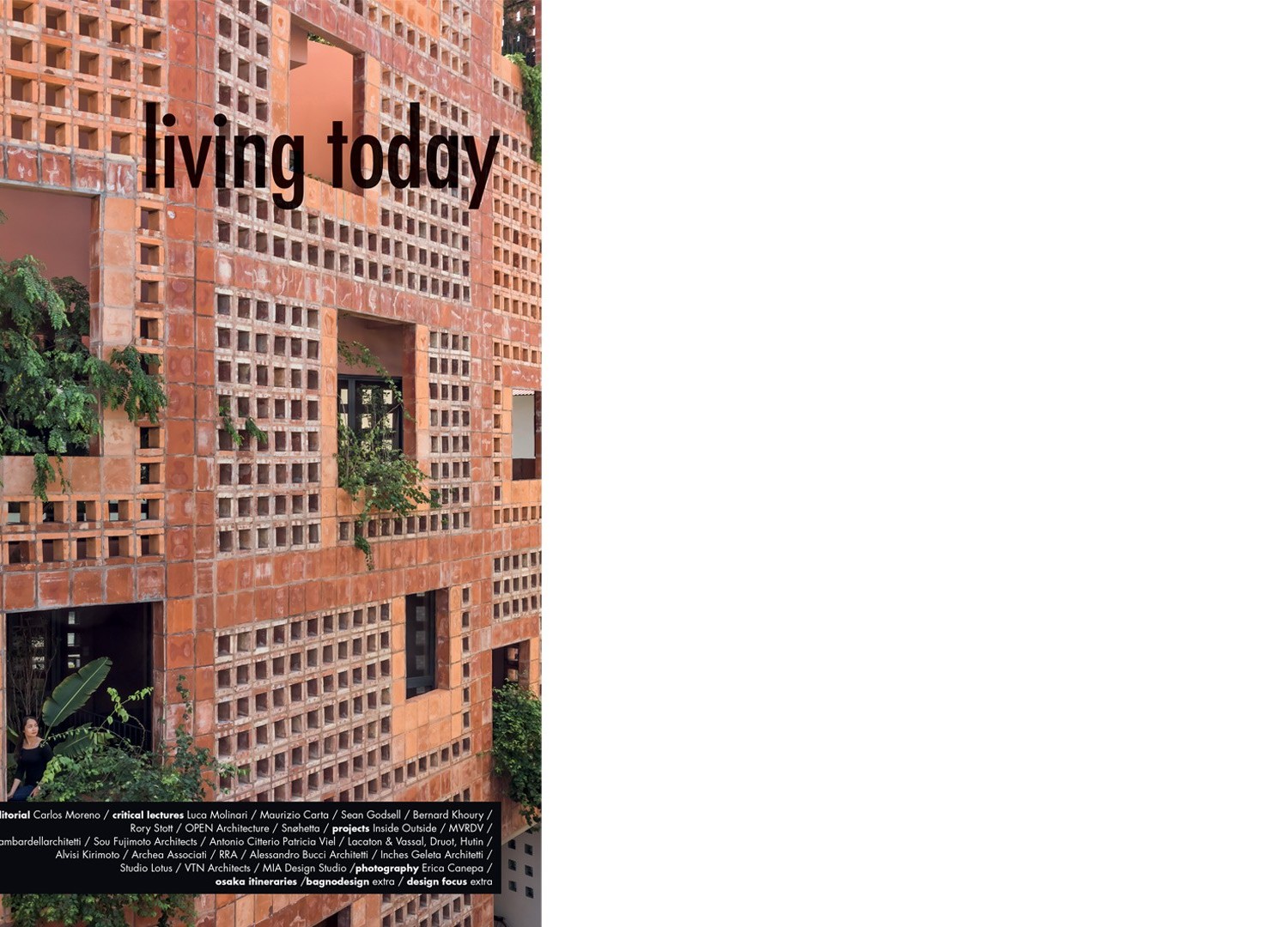
International magazine of architecture and project design march/april 2021
The home in the year of the pandemic
Seeing as architecture is a slow form of art that, over time, expands the distance between the creative process and its physical realization, the collective spaces and residential places we are considering today are the results of designs made prior to the pandemic emergency caused by Covid 19. Nevertheless, amid the pain and deprivation brought by what is still a largely mysterious virus, reflections are emerging that revive the topic of the home, making it at least useful for those who work with architecture to once again carefully investigate the contents and specific features of the contemporary domestic space. This may be a need that comes out of the condemnable negligence shown by architectural critics over the years regarding the home (from this point of view, Area seems exempt from criticism: see issues 55, 61, 68, 86, 93 and 118 on the topic). However, even if of little consolation to professionals in this sphere, we should remember that just a few months ago no one could have imagined that such an unimaginable event would force us to live inside the walls of our home for far longer than we would have ever thought, so much increasing the time we have spent and the things we do inside our homes. In any case, rather than focusing exclusively on internal layouts, we are also considering services and equipment for aggregate housing systems, including larger elements like buildings, blocks, neighborhoods, and, ultimately, the urban space. Moving through these different levels, what considerations and lessons can we draw from our current experience? The first and most dramatic phenomenon is about connectivity and access to digital services. While this may seem easy for high-density urban areas – even if full broadband coverage in historic Italian town centers remains a mirage – it becomes a true form of social ghettoization and discrimination for smaller towns and rural areas that lag behind when it comes to easy access to online information, as do many places and countries in the developing world. In short, with dramatic speed we have understood that to participate in life and be collectively involved as citizens, we need more than just to share or own a closed, covered, and climatically comfortable physical space; we also need an accessible virtual space that is equally comfortable to use, not only for remote working and distance learning but even for healthcare and so our wellbeing. Considering connectivity and the virtual space, we have also quickly seen how inadequate most of our homes are, in terms of quantity and quality of physical space, for doing many tasks that we used to do out of the home but now, and perhaps in the future, we must for all practical purposes consider domestic activities. For years, the market has pursued and offered ever smaller, more compact homes, including studios and two-room apartments (living room-kitchen, bathroom, bedroom) with no entryway and so no filter between the outside and inside, with only one bathroom as if having another small one were a luxury and not already a necessity for undressing and sanitizing before entering the home, and with no balcony or outdoor area as if there were no need for a private space in which to breathe in the open air, grow a plant, or create a micro hanging garden. In the same way, the housing market had not imagined or understood any need for remote working or learning environments in standard mid-level housing, reserving these objectively essential services for the luxury market. And what about collective and building services? How many buildings are equipped with a gym, a kids’ playroom, study rooms, or compartments for receiving packages beyond ordinary postbox mail? In Italy, there are certainly very few. Although the international market is better, it is certainly not comprehensive or enough. How can we solve this demand to modernize all the substandard, energy-intensive, sometimes inhospitable buildings we have inherited? With specific regulations that legally establish new standards and new qualitative criteria, starting from public and social construction so that the private market is made to conform to the same levels. This is a full-fledged cultural shift, but it is easy to understand and implement through the indispensable work of democratizing options that respond to the needs of contemporary living. To be clear, we should make the housing market implementÍ the same rapid modernization that other industries such as the automotive sector have done. Only a few decades ago, accessories like air conditioning, power steering, or the brake booster, safety equipment like airbags, and leisure equipment like the car radio were the exclusive prerogative of luxury cars. Can we imagine a compact car today without Wi-Fi or Bluetooth, without a navigator or air conditioning, without an adequate trunk, low consumption, low emissions, or comfortable suspension? No, we can’t imagine it, we won’t accept it and, ultimately, we won’t buy it. Why should this not happen for domestic spaces, which are far more important and where we certainly spend more time?
Marco Casamonti
Download cover
Download table of contents
Download introduction of Marco Casamonti
Download “San Donato Residential Complex” – Archea Associati


